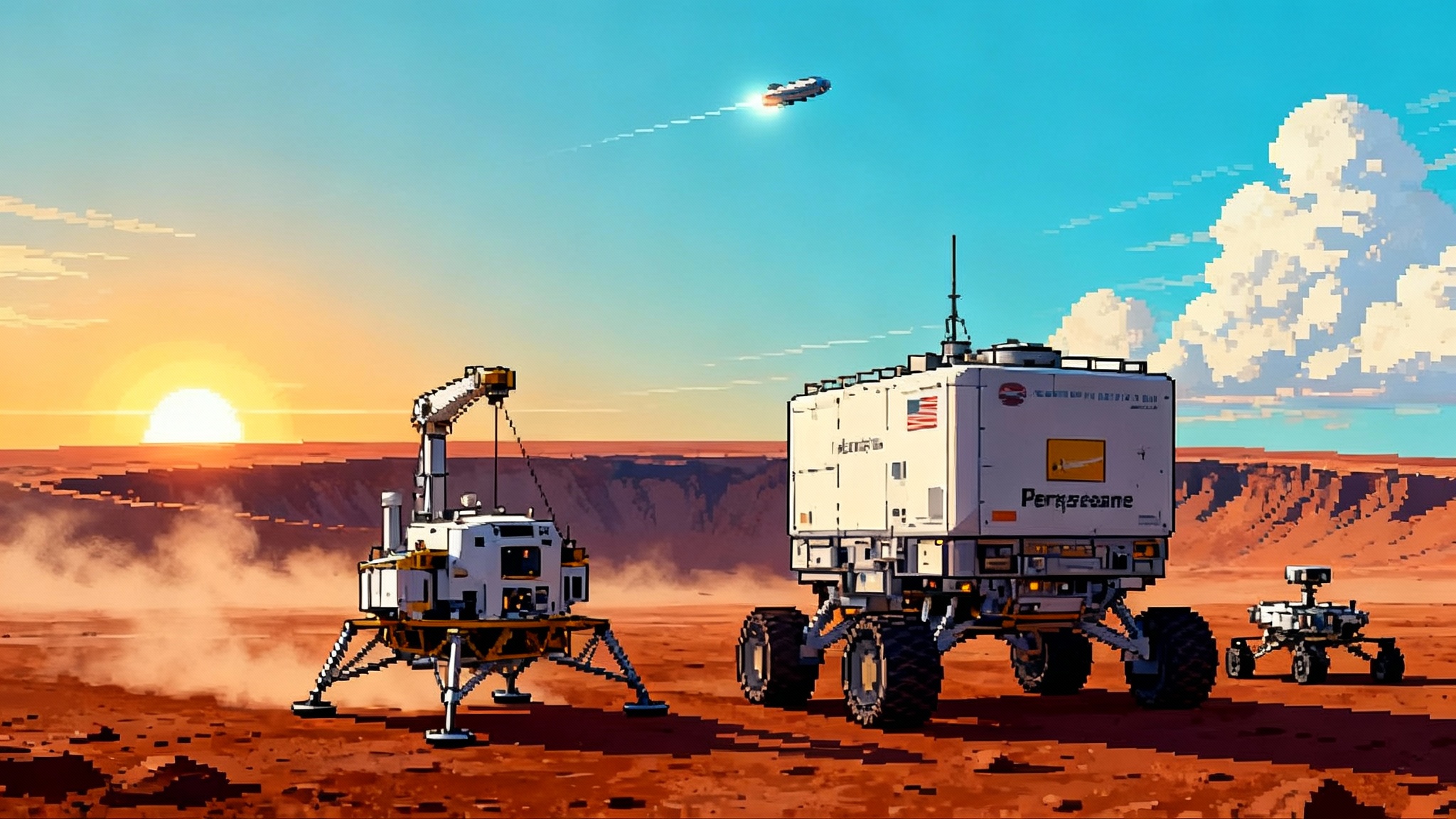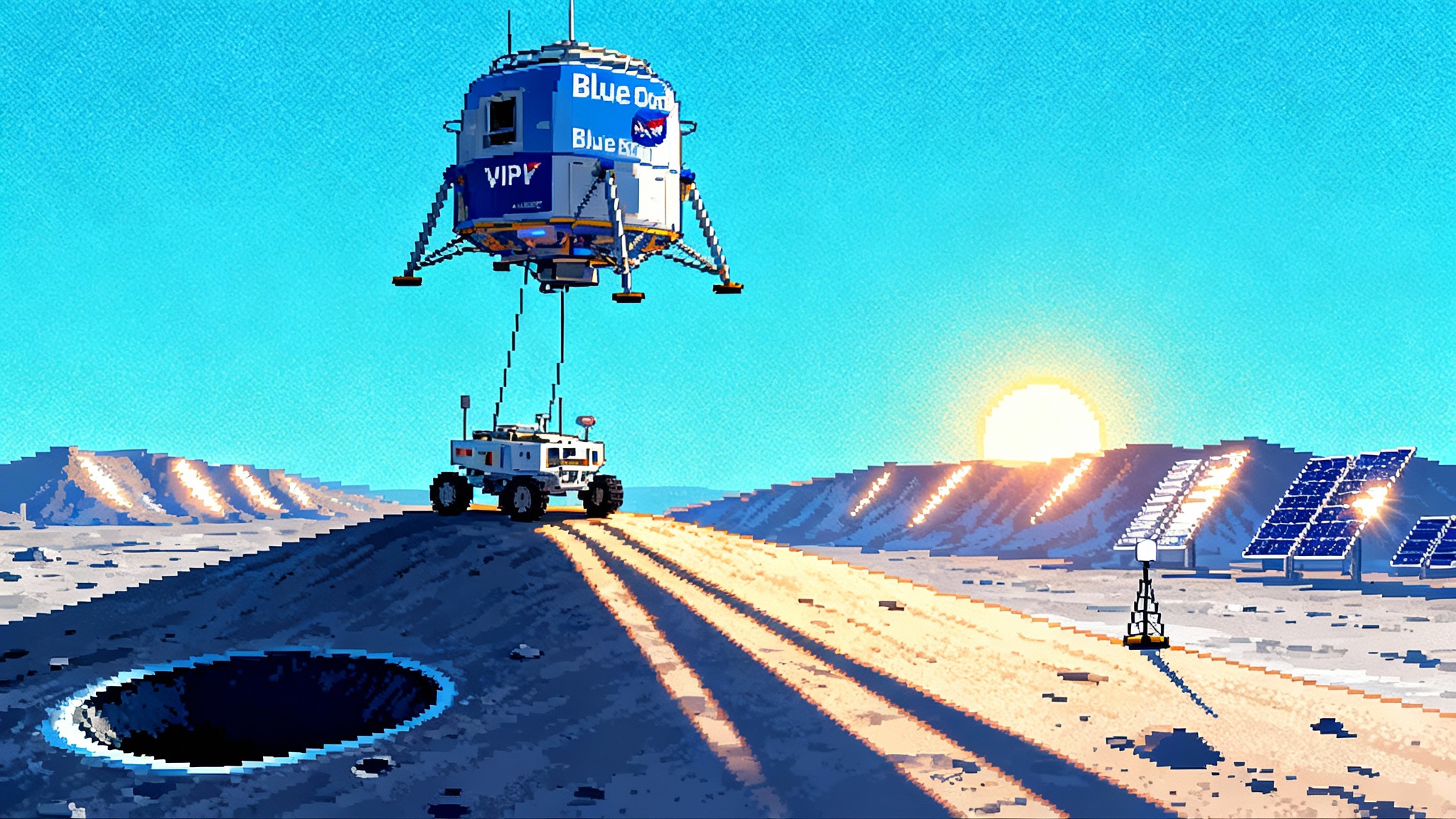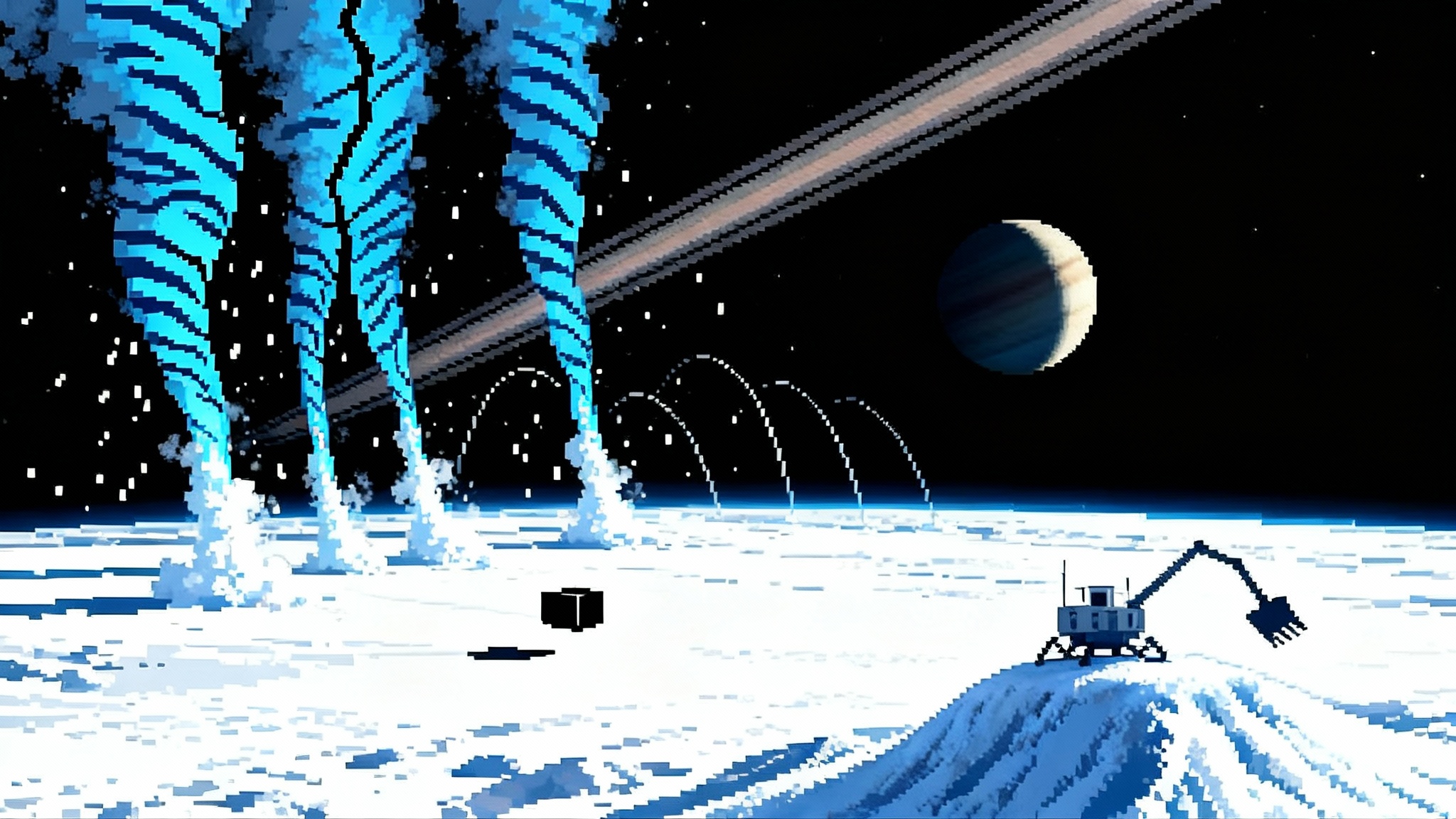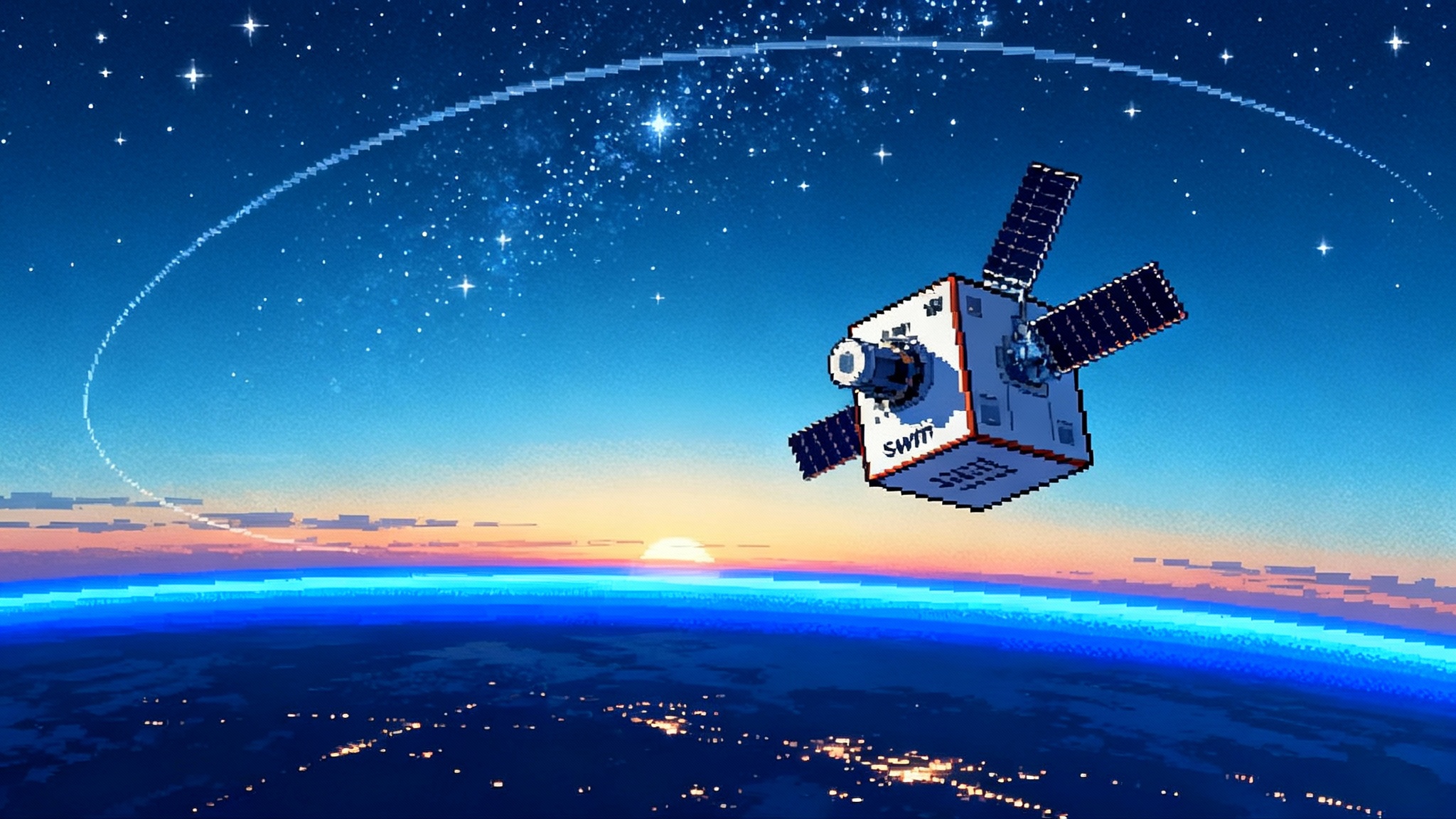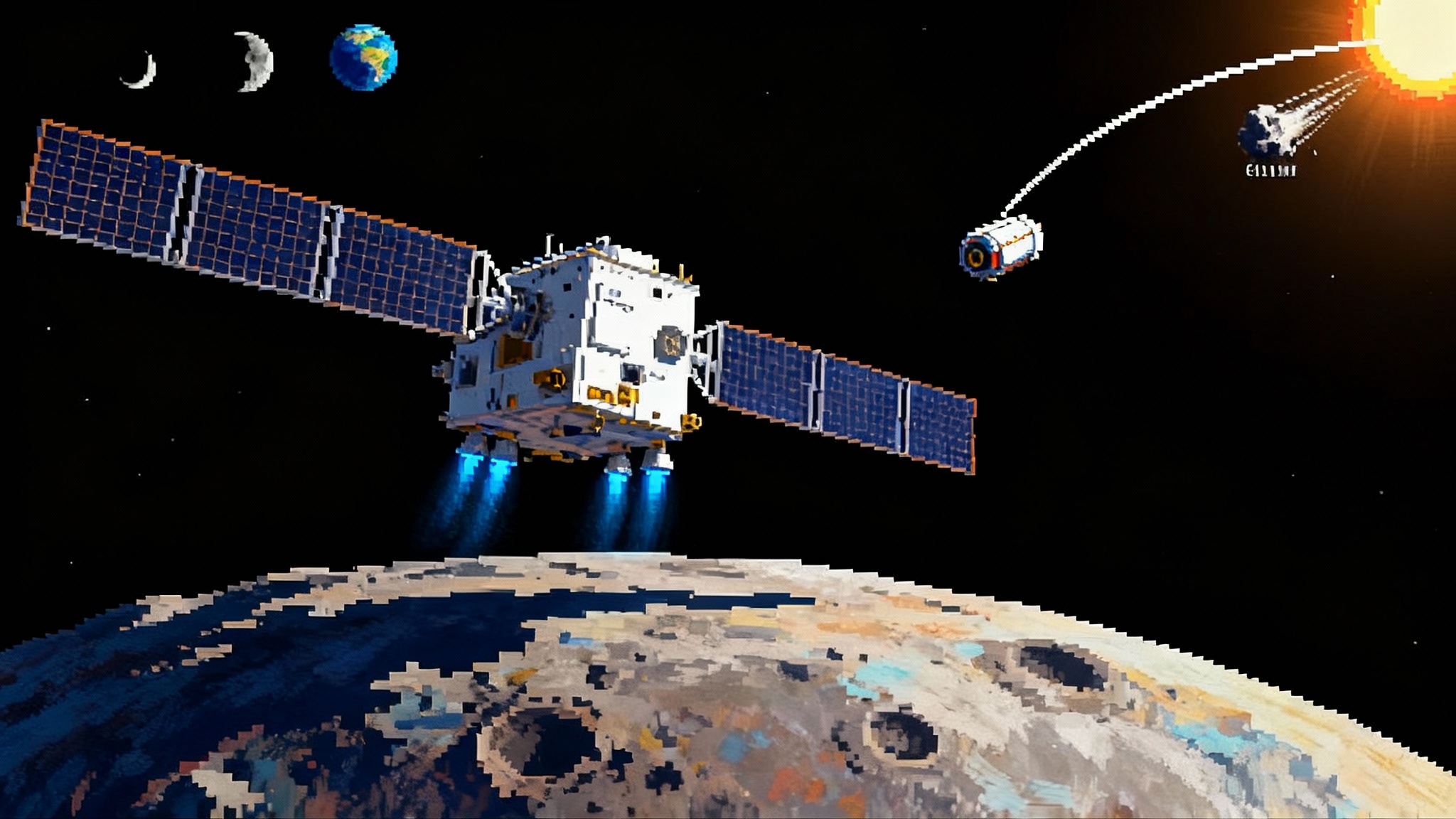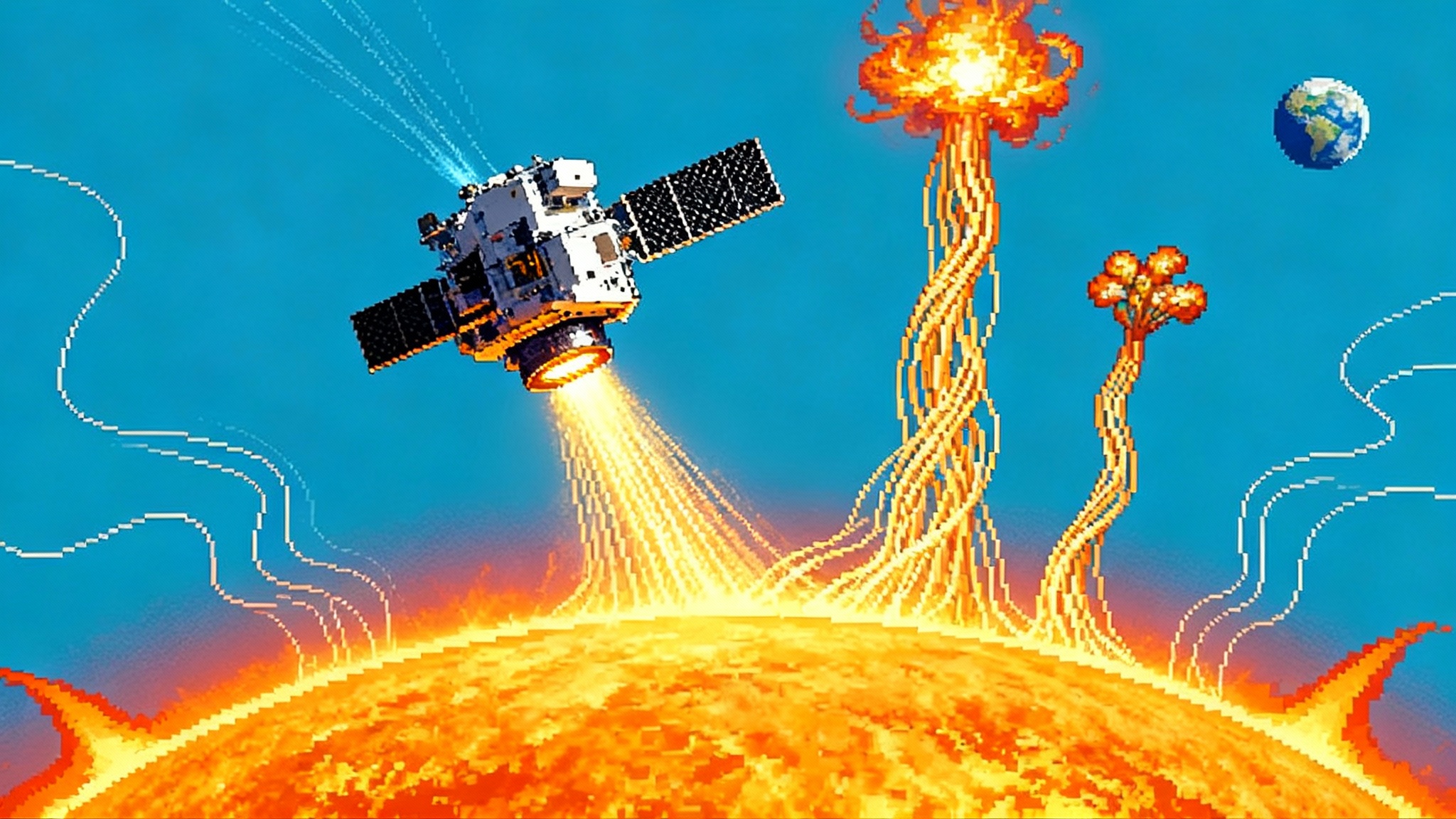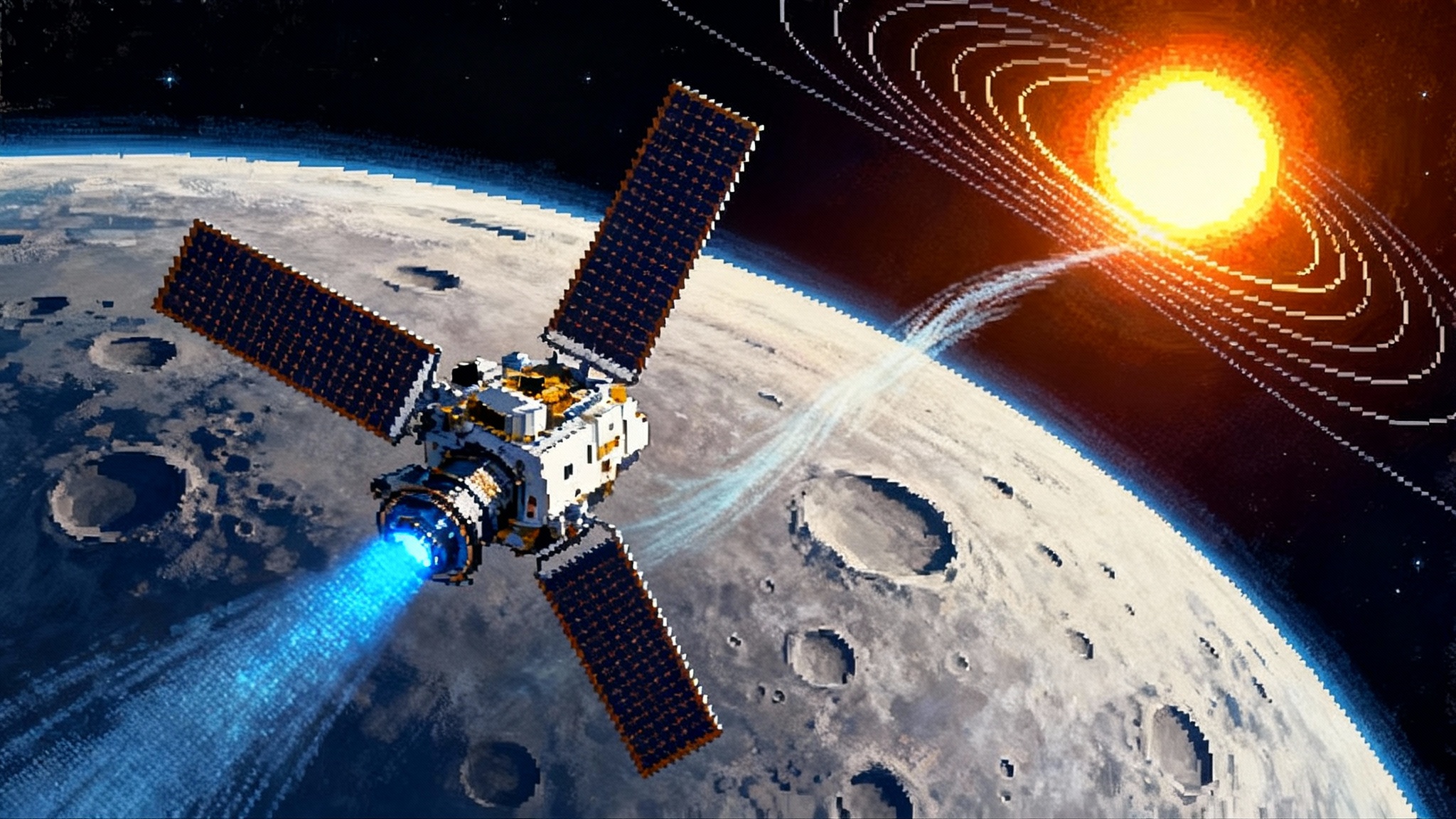Uranus just gained a moon. Time to launch the orbiter
A fresh Uranus moon from JWST and crisp April 2025 occultations reshape ring hazards and entry conditions. Here is a concrete two-year plan to de-risk and fast-track a Uranus Orbiter and Probe.
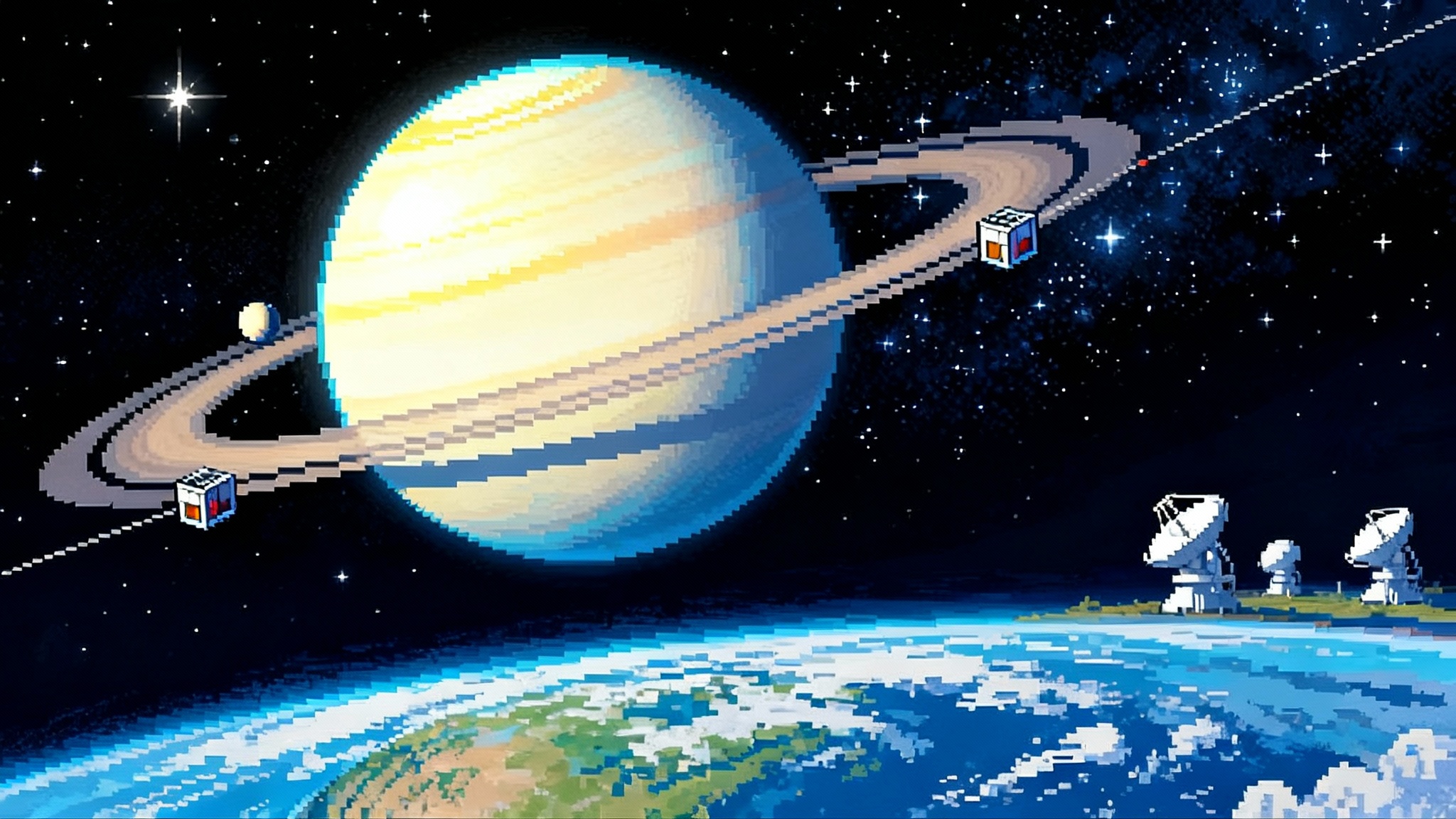
Breaking discovery, bigger stakes
Uranus just got more crowded. In August 2025, a team analyzing James Webb Space Telescope images announced a new, six to ten kilometer moon tucked near the planet’s rings. It is faint, fast, and right where ring dynamics say a shepherd should be. The find does more than pad Uranus’s moon count. It changes how we should design and fly a flagship mission to the ice giant. With new information in hand, the smartest move is to accelerate a Uranus Orbiter and Probe and lock in decisions that reduce risk and increase science.
The first high-stakes claim is simple: this is real, and it is timely. NASA detailed the discovery and its context in a clear update. Read the specifics of the detection, the instrument used, and the tiny moon’s provisional designation in NASA’s Webb discovery note.
A moon in the ringworks
The new object, currently designated S/2025 U 1, sits between the orbits of Ophelia and Bianca. Think of Uranus’s inner system as a crowded skating rink. Narrow, dark rings trace fragile lanes. Small, misshapen skaters nudge from the sides to keep the lanes tight. Webb just spotted one of those rink guards. Its nearly circular, equatorial path suggests it formed locally. That matters because moons and rings are coupled. If this shepherd is sweeping dust and gravel into patterns, it can subtly reroute where a spacecraft would find the safest plane to cross the rings and where a probe would thread the cleanest path into the atmosphere.
We also learned something about our tools. Webb’s near infrared sensitivity and long exposures pulled out a point source that Voyager 2 could not see in 1986. That difference is not academic. It tells us the Uranus system contains more small bodies than the last generation’s playbook assumed. More tiny moons means more embedded dust and more potential collision pathways near the rings. This is exactly the kind of late-breaking discovery that should change a flight plan while there is still time to change it.
The April 2025 occultations turned Earth into a telescope
A second fresh data stream landed this spring. On April 7, 2025, scientists coordinated a global campaign to watch Uranus pass in front of a bright star. When a planet occults a star, its atmosphere and rings briefly sculpt the starlight. It is like scanning the planet with a medical X ray. From the way the light dims and brightens, researchers extract temperature, winds, haze layers, and ring profiles. The effort, led by teams across NASA and partner observatories, produced clean light curves at multiple sites and wavelengths. For an overview of the event and the goals, see NASA’s occultation campaign page.
These occultations matter for engineering. An entry probe will slam into the top of Uranus’s atmosphere at tens of kilometers per second. Knowing the fine structure of the upper atmosphere changes how we size the heat shield, where we aim the entry corridor, and how we program the parachute sequence. If the occultations point to seasonal thermal inversions or denser-than-expected haze, the probe’s sensor suite and descent profile should adjust now, not after a preliminary design review.
Why these two results change a mission
Taken together, the new moon and the occultation profiles close several knowledge gaps that have lingered since Voyager 2’s flyby. Here is what they change for a Uranus Orbiter and Probe.
- Ring hazards are not hypothetical. A small shepherd moon implies active ring maintenance and fine dust. Fine dust is a serious impactor at orbital speeds. It sands optics, jams mechanisms, and contaminates detectors.
- The atmosphere’s top layers are structured. Occultation curves sharpen the vertical gradients of temperature and density. That affects the probe’s heating rates and the timing of communications through the plasma sheath.
- The inner system is more dynamic than the baseline models assumed. New moons often mean unseen wakes and arcs. Those structures can shift in months to years, which means we should plan to map them repeatedly during cruise and approach.
In short, the mission’s safe lanes and best science targets have moved. We should move with them.
The case to accelerate a flagship
The 2022 Planetary Science Decadal Survey already placed a Uranus Orbiter and Probe at the top of the flagship queue for the 2020s. The reasons were strong before. Ice giants are the most common type of exoplanet. Uranus is accessible in the early 2030s with a gravity assist that cuts travel time to roughly the teens of years. Its magnetosphere and moons are unexplored in detail. The 2025 discoveries make the case practical as well as scientific. We now have concrete tasks that can be done in the next two to three years to de risk the mission and improve its design. We have made similar urgency arguments in Enceladus mission urgency.
A near term plan the community can execute
Here is a focused three part plan that agencies, universities, and industry can start now. Each action lists what to do, why it matters, and how to deliver.
1) Expand the coordinated occultation network
-
What to do
- Build a standing network for outer planet occultations that combines professional observatories, university telescopes, portable instruments, and vetted citizen scientists. Cover three longitudes per hemisphere so weather cannot wipe out events.
- Fund standard kits: high speed cameras, time stamp modules, filters, shipping cases, and software templates for quick reduction.
- Publish a one year rolling calendar of predicted Uranus occultations and practice runs on bright stars.
-
Why it matters
- Occultations reveal temperature, density, hazy layers, winds, rings, and possibly extended exospheres at the exact altitudes a probe will traverse. Repeating them across seasons refines models that become boundary conditions in entry simulations.
-
How to deliver
- Assign a lead program office at a NASA center with strong atmospheric entry heritage. Use competitively selected coordinators at universities to manage volunteer networks. Pair each event with a data sprint so light curves are reduced and cross checked within two weeks.
2) Fund targeted ring hazard mapping
-
What to do
- Use Webb, Hubble, and ground based giants to perform a cadence of ring imaging and stellar appulses during the next two years. Target the arcs and gaps where dust concentrations fluctuate. Schedule short, repeat visits rather than one long shot. Pair with thermal infrared to constrain particle sizes.
- Develop a unified ring hazard model that translates brightness and color into particle size distributions and collision probabilities at likely ring plane crossing altitudes. Treat this like weather forecasting for dust.
-
Why it matters
- The orbiter must cross the ring plane and likely operate inside it. A quantitative hazard map informs trajectory design, instrument covers, and cleaning protocols. It also guides where to place initial high inclination orbits.
-
How to deliver
- Put out a directed call with fast award timelines. Require teams to share calibrated images and derived particle models into an open repository. Fund a small cross institution group whose only job is to merge products into a live hazard atlas with weekly updates during key observing seasons. Lessons from BepiColombo’s reroute insights can guide rapid trajectory updates.
3) Seed smallsat ring sentries
-
What to do
- Design and build two to three “ring sentry” small spacecraft to ride along with the flagship or to launch as independent scouts a year ahead. Each carries a simple dust counter, a narrow field camera with a protective shutter, and radio beacons for precise navigation.
- Fly them on grazing trajectories that sample different ring radii and inclinations before the main orbiter’s arrival.
-
Why it matters
- Think of these sentries like weather buoys deployed ahead of a storm. They measure the dust environment in situ, validate hazard models, and mark safe corridors. If one is lost, the flagship learns without being at risk.
-
How to deliver
- Use proven smallsat buses with radiation tolerant parts. Keep power simple with fixed panels and primary batteries for peak operations. Define an end of life plan that guarantees controlled disposal into the planet or a safe graveyard orbit. NASA’s two-track Mars samples plan shows how parallel paths can retire risk without stalling the flagship.
What to fix in the mission design right now
Accelerating a mission is not only about money and schedule. It is about narrowing choices while new data can still swing them. Here are the choices that today’s findings should influence.
-
Entry probe heat shield and descent profile
- Update ablator thickness and parachute timing using the April 2025 occultation profiles and follow on events. If the upper atmosphere is warmer than expected, heating ramps faster and the probe needs more margin. If hazes are thicker, optical sensors need wider dynamic range.
-
Ring plane crossing geometry
- Use the new moon’s orbit and ring wakes to pick the safest ring plane crossing altitude. An initial crossing just outside the dense main rings with a quick plane change into higher inclination can dramatically lower dust risk while preserving a strong gravity field measurement.
-
Instruments that face the dust
- Add shutters or deployable covers to any exposed optics. Consider a sacrificial dust bumper in front of critical apertures. Instruments most at risk include star trackers, visible cameras, and ultraviolet spectrographs. Engineering cameras can double as dust monitors by watching for streaks and pings during test maneuvers.
-
Magnetosphere and radio science plan
- Uranus’s magnetic field is tilted and offset. The orbiter needs a tour that samples a range of local times and latitudes quickly. Early orbits should prioritize radio occultations of the atmosphere and ring plane to cross check ground based occultation data.
-
Communications and data return
- If the trajectory avoids high dust lanes by going to higher inclinations, the Deep Space Network view periods change. Lock in high gain antenna sizing and ground station scheduling now so the tour design and downlink plan co evolve.
Who does what
-
NASA centers
- Jet Propulsion Laboratory leads system engineering and mission design. Goddard Space Flight Center leads the probe’s atmosphere and instrument integration. Ames Research Center leads entry systems and heat shield testing. Langley Research Center manages the occultation network and data repository.
-
Industry
- Spacecraft buses and propulsion come from a prime with deep outer planet heritage. Consider storable propulsion for tour agility and a compact high efficiency power system. Radioisotope thermoelectric generator supply must be matched to the payload early. Small satellite vendors build the ring sentries with firm fixed price contracts.
-
Academia
- University teams run ring dynamics modeling and atmosphere retrievals. Graduate students lead rapid occultation reductions and model validation sprints.
-
International partners
- The European Space Agency can contribute a probe instrument or even the probe bus, building on heritage from Huygens. The Canadian Space Agency can add contributions to the magnetometer or fine guidance sensors. Shared smallsat rides build global buy in.
-
Citizen scientists
- Vetted amateurs with mid sized telescopes and high speed cameras extend occultation coverage. Provide standardized training and data tools. Recognize contributions in real time to keep the network healthy.
Money, schedule, risk
This is a multi billion dollar flagship, but the near term plan is modest. A robust occultation network can be stood up for a small fraction of one percent of the flagship’s budget. A targeted ring imaging program is essentially telescope time plus a coordination team. Ring sentries are affordable by design, and their value is measured in risk that never materializes for the main spacecraft.
Schedule is the other currency. The early 2030s provide favorable gravity assist opportunities that shorten the cruise. Every year we wait, cruise times lengthen or trajectory options become hotter and harder if Venus flybys are used as substitutes. Compressing the next twenty four months around the three actions above keeps the door open for a timely launch and a late 2030s arrival.
Risk is rarely eliminated. It is shaped and traded. Occultations give us a sharper atmosphere. Ring imaging gives us a sharper hazard map. Sentries give us a sharper on ramp to the tour. Together they move risk from the unknown column into the managed column.
What readers should watch for next
- Repeated Webb and ground based imaging of the inner rings. If arcs brighten or shift, expect updates to proposed ring plane crossings.
- Additional occultation campaigns as Uranus’s season changes. These will test whether the upper atmosphere is warming or cooling and whether haze layers are thickening.
- Early design reviews where instruments add shutters, covers, or dust shields. Those choices tell you the mission is internalizing the new hazard reality.
- Announcements about smallsat ride shares or scout launches. When a ring sentry passes preliminary design review, the plan is real.
The payoff
A fast tracked Uranus Orbiter and Probe is not a rush job. It is a targeted acceleration that uses new knowledge to buy down risk. The new moon is a clue that shepherds are at work and that dust is patterned in ways we can measure and avoid. The April occultations are a reminder that there is no substitute for watching the planet sculpt a star’s light and letting physics speak. If we act now, the orbiter and probe that reach Uranus in the 2030s will arrive with a map in hand and confidence in the path ahead. That is how you explore a strange world well. You do your homework, you send scouts, and then you go.
